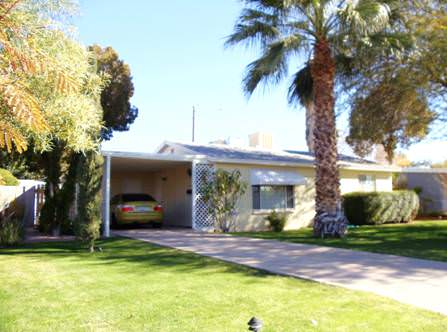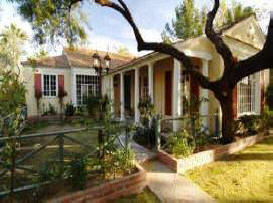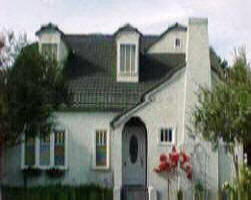|
Search Arcadia Homes For Sale
FEATURED ARCADIA HOME FOR SALE
4612 E. Glenrosa Ave. Phoenix, AZ 85018 In the HEART of Arcadia
Offered at $265,000 - MLS # 5215911

This enchanting completely remodeled block built cottage sits in the HEART of Arcadia with up close views in the backyard of CAMELBACK MOUNTAIN. PLENTY of room for expansion if desired on this north/south lot! This house is all about location & decor. High-end remodels on the same block are selling for over $500k! Walk or bike to LaGrande Orange, Postino's Wine Cafe, Arcadia Tavern, The Vig, Zipps, Nook & loads of other restaurants & shopping. If you like to walk, run or bike, the canal is 2 blocks away! Very close to the 202, 143, 10 & 51 Freeways, The Biltmore, Fashion Square, Sky Harbor Airport and all in the highly accredited Hopi-Scottsdale Unified School District! 200 amp electrical panel, copper plumbing, dual pane windows & 30-year roof shingle.
The kitchen & bathrooms have a stunning custom remodel. Granite countertops, custom maple cabinets and terrific ambient lighting are just a few of the features. The bathroom has custom hand laid travertine in shower done by an artist/contractor. Concrete floors new blinds, great closet & cabinet space & a lot more throughout home along with a 50-gallon water heater, Yard has full, custom landscaping, drip & sprinkler system, landscape lighting, orange & lemon cocktail citrus tree, mature cacti & huge patio (20x18) & shed. Large laundry room with plenty of storage (13x4). Fantastic home in a fantastic neighborhood!
The Arcadia Neighborhood of Phoenix, Arizona, simply known as "Arcadia," has been around since the 1920’s and is considered to be one of the premier neighborhoods in all of Phoenix.
Arcadia was named a “Best Place to Live” by Money Magazine. From the article in CNNMoney dated November 26th, 2002:
"Because Arcadia is so highly regarded for its greenery and high-performance schools, which are in the Scottsdale system, prices are on the high end: Starter homes begin at $300,000. Homeowners tend to do a lot of remodeling, adding much diversity to the once similar-looking homes; it's not uncommon to see a country cottage adjacent to a Spanish hacienda. Residents brag about being close to Scottsdale's high-end shopping, a world-class resort, arts centers and good restaurants, as well as downtown Phoenix..
"For real proximity to downtown Phoenix, head for the Encanto-Palmcroft district, where many houses date back to the 1920s. But the convenience costs. Smaller houses and fixer-uppers fetch about $250,000, while statelier homes attract urban professionals who shell out $500,000 and up. The neighborhood abuts 200-acre Encanto Park, another welcome patch of green in this desert town."
Arcadia is known for its magnificent ranch style custom homes with a variety of architectural styles from small ranch homes to sprawling, luxurious ranch homes with large lots (commonly half-an-acre), lush manicured lawns, citrus trees, mature trees and Oleanders, irrigated lots, swaying palm trees, wonderful views of Camelback Mountain and so much more.
The location is often called "midtown" as it is in the middle of everything. It's a very short drive to Scottsdale Fashion Square and Old Town Scottsdale, just a few minutes to Sky harbor Airport, two miles to I-10 Freeway, borders Paradise Valley and Scottsdale and is a very short jaunt to downtown Phoenix. Additionally, Arcadia homes are just minutes away from shopping and fine dining at the Biltmore Fashion Square Park at 24th Street & Camelback Roads.
The East Side of Arcadia is a neighborhood in Phoenix, Arizona. It contains some of the city's most upscale neighborhoods, largely due to its proximity to the Biltmore area. This area near 24th Street and Camelback Road has recently gained the attention of wealthier residents. Stretching east, several mid-rise offices and condos line what is known as the "Camelback Corridor". The area gets its name from the Arizona Biltmore Hotel. This Phoenix landmark has pampered guests since the 1920's. Its grounds and golf courses are surrounded by some of the most exclusive homes in the Valley.
East of the Biltmore area is the Arcadia neighborhood. Located at the base of Camelback Mountain, Arcadia contains well-kept homes on large lots. Built on former citrus groves, Arcadia is known for well-irrigated, mature landscaping. Several yards prominently feature orange, lemon and grapefruit trees as reminders of the area's past.
The Camelback East urban village of Phoenix is entirely contained in this area. The boundaries of this village encompass opposite socioeconomic backgrounds, with lower-income neighborhoods located in the southern part and affluent neighborhoods located in the northern (and especially northeastern) part. The southern half of the neighborhood (generally south of Indian School Road and/or the Arizona Canal is generally middle-income. The upper section, including the green Arcadia district between Indian School Road and Camelback Road, is quite affluent and well-maintained sharing much in common with the Biltmore neighborhood, the town of Paradise Valley, and North Central Phoenix.
With the implementation of the Salt River Valley Reclamation Project after the turn of the century, development of irrigable lands in the suburbs of Phoenix as large, rural homesites became a viable alternative land use. Single, independent construction efforts by some wealthy landowners were not uncommon. An Alternative and more ambitious concept was the development of large tracts of land, specifically for the purpose of creating upper class, rural estates suburbs.
The concept involved assembling sizeable real estate holdings from several owners, then surveying, platting, and marketing the subdivision. Because assembling the necessary real estate in the Valley’s relatively mature agricultural environment was difficult, only one such subdivision emerged in the central Salt River Valley: the Arcadia Subdivision.
The part of Phoenix commonly referred to as Arcadia, encompasses the area north of the Arizona Canal and south of Camelback Road between 44th St. and Scottsdale Road. However, the first tract of land platted within this land area was not the original Arcadia development, but rather a development called Citrus Homes. First recorded in June 1915 by L.E. Froman, Citrus Homes was bounded by Camelback Road and Lafayette Blvd. to the North, 56th Street to the East, and the Arizona Canal to the South. The Citrus Homes development contained 25 lots which ran from North to South with the southern boundary of each lot bordering on the Arizona Canal.
Located directly North and Northeast of the Citrus Homes development was the original Arcadia development first recorded in December 1919. Developed by the Jordan, Grace and Phelps Land Company and the Charles Keafer firm, Arcadia was bounded by Lafayette Blvd. to the south, Scottsdale Road to the east, approximately Rockridge Road to the north, and 44th Street to the west. The physical layout of the plat was divided into two distinct sections.
First, the area east of 56th Street was divided into 23 blocks with each block further divided into 4 lots of approximately ten acres. Second, the area west of 56th Street was divided into 18 blocks with the majority of the blocks further divided into 8 lots of approximately five acres. One distinct feature of this plat was the designation of Block L, located north of Camelback Road and west of 56th Street, as the Arcadia Townsite.
By dividing the Arcadia Tract into relatively large five to ten acre lots and mandating that no home could be constructed for less than $5,000, the developers were clearly attempting to attract the more affluent homeowner who wanted to live in a rural setting. In effect, these large lots were designed to be sold as small citrus orchards. To this end, Arcadia’s developers, including Seymour Jordan, Robert Grace, and Charles Keafer, highlighted the area’s agricultural potential and hoped that “the purchasers of this land will engage in the growing of citrus fruits.”
In order to successfully develop citrus groves in Arcadia, there had to be a stable source of water from which the orchards could be irrigated. While Arcadia was located near the Arizona Canal because of the slope of the land only the lots south of Camelback Road benefitted from the water source. Therefore, the developers, led by Seymour Jordan, formed the Arcadia Water Company in 1919. This organization constructed several large pumping plants in Paradise Valley capable of supplying 2,100 acres with water. In order to transport this water throughout the Arcadia development, an underground irrigation system was planned. By 1924, construction crews had laid fifteen miles of underground concrete pipe in the area. The dwelling which is currently the Shemer Art Center and Museum was built in 1919 as a residence for the foreman of the water company.
The original financing for the Arcadia plat had fallen through by the mid-1920's, resulting in much of the area being refinanced and replatted by a variety of different owners between 1925 and 1031. These subdivisions included Glencoe Highlands (1925), Arcadia Estates (1926), Arcadia Replatted (1926), Hacienda Allenada (1930), and Alta Hacienda (1931). Although Arcadia was no longer under single ownership, for the most part the new developers still promoted “Arcadia” as a community for affluent people looking for a rural, estate atmosphere. Not only did lot size remain relatively large, ranging from 4 to 10 acres, but minimum cost restrictions for the construction of homes increased. Additionally, the agricultural potential of the area, particularly the cultivation of citrus groves, continued to be a priority.
There existed several stated requirements concerning house construction in the Arcadia Replat. First, the cost of building a house had to exceed $10,000. This was an increase from a minimum outlay of $5,000 in the 1919 Arcadia Plat. The cost requirement was implemented in order to attract only the most wealthy investors and thereby create an exclusive community. A second requirement for construction concerned wood buildings. All wood buildings had to be stained or painted immediately upon construction. Additionally, in an effort to establish continuity of appearance among houses, all new houses were required to “conform and harmonize with the type and exterior design of neighboring buildings within Arcadia Replatted.”
One of the charming older homes located on the west side of the Central Arcadia area was built by Mrs. Jane Cotton around 1919 or 1924. A later owner had been told the house was built in 1924, but when cement work for the porch was done, a 1919 edition of a newspaper was found in a brick, leading the owners to believe that it could have been built then. The house is constructed of brick with hardwood floors, and it also has a basement. When Mrs. Cotton first lived in the home wild horses could be seen running along Lafayette Boulevard and indeed had the right of way.
On the southwest corner of Lafayette and Avenida del Puente is a home built in 1935 for Ruth Wendell, who was the original founder of the Phoenix Crippled Children’s Hospital. Ms. Wendell was a school nurse from the Globe-Miami area. When she moved to Phoenix, she was concerned for the crippled Indian and Mexican children and began caring for them. The parents of the children she helped wanted to build a house for her. The lot she purchased extended from Lafayette Boulevard south to the canal. The home had cement tile floors, and was made from adobe bricks that were made on the property. When they were working on the house, an Indian put a piece of bread in the wet frame of the doorway. He told Miss Wendell that, “Whoever entered the house would never go away hungry.”
The 1930's also saw the first of the resorts that have graced the district, attracted by the affluent, relaxed residential character of the area as it developed. The Cook Mansion, built by the Thomas Cook Travel Agency family, was converted at that time for this purpose and became the original structure for the Royal Palms Inn. Others developed in the early years in the area were the Jokake Inn, the Paradise Inn, and Elizabeth Arden’s Main Chance retreat, adding to the ambiance of the area.
In the mid 1950's, Phoenix growth reached Arcadia. Although most of Arcadia is now in Phoenix, the area east of 64th Street is in Scottsdale.
Zoning originally limited development to one house per five acres. Large setbacks were provided around the periphery of the five acre parcels. By the mid 1950s, a number of residential developments had begun. One example is the Mountgrove area, formerly the Sphinx Date Ranch, extending from 46th Place to 47th Place and from the Arizona Canal north to Lafayette Boulevard. The majority of the homes were built in 1954 with careful attention to preserving the Sphinx Date palms, since it was believed that this was the only area in the United States where this variety would grow.
To watch for violation of zoning restrictions, the Mountgrove Property Owners Association was quickly formed and a declaration of restrictions was prepared and registered. There was strong feeling of keeping the area residential and, in 1960, the association successfully concluded a lengthy objection to commercial zoning of the date processing plant area on Lafayette between 46th Place and 47th Street.
The quality of construction in the late 50's and early 60's in Arcadia has influenced many people in the area to renovate their homes rather than relocate to newer areas. Home values have steadily increased and the few remaining parcels in the neighborhood have been developed with high quality homes.
In the late 1980's the Phoenician Resort located at 60th Street on the north side of Camelback Road was developed. With its 27 hole golf course and luxurious guest accommodation, it has gained international recognition as a 5 star resort. The old Royal Palms Inn has also been renovated with unprecedented elegance. Its location is on the north side of Camelback Road at Rubicon Drive. Two new residential subdivisions have been developed in the 1990's. Arcadia Estates is located at the southeast corner of Arcadia Drive and Lafayette Boulevard. Royal Palms Estates is developed on what once was the Royal Palms Inn executive golf course.
The area remains in demand because of the unique irrigation system, citrus groves, a quality school system, a strong and active neighborhood association, proximity to neighboring communities and relatively easy access to downtown Phoenix. The natural boundaries of the Arizona Canal on the south and Camelback Mountain on the north have kept the area quiet and insulated from traffic. These advantages are attracting many young families to the area.
There are two elementary schools in the area: The Arcadia Neighborhood Learning Center at 4330 N. 62nd Street and Hopi Elementary Schoo at 5510 E. Lafayette Blvd.
There is one public recreation area known as Herberger Park at 56th Street and North of Indian School Road. This park has picnic tables and tennis courts.
Most of the retail is located at 44th Street and Camelback Road, and between 44th and 48th Street and Indian School Road.
The largest employer in the area is the Phoenician Resort with a staff of more than 1000 employees. The location of this resort is in the vicinity of 62nd Street and Camelback Road. The second largest employer is the Royal Palms Inn with 135 employees. The location of the recently renovated Royal Palms Inn is at the intersection of Rubicon Avenue and Camelback Road.
The closest police and fire facilities are located outside the special planning district. The Squaw Peak Precinct is located at 6206 North 24th Street. The nearest fire station is located at 4247 North 32nd Street.
A Little History
This desert oasis of beautifully landscaped Historic Phoenix homes was named for Virgil’s Arcadia: a peaceful, pastoral region of ancient Greece. In the early 1920s, the land to the south of majestic Camelback Mountain went up for sale at 35 cents an acre. It was mostly sold in 5-acre parcels as citrus orchards—that is, after the Arcadia Water Company began irrigating. Today, Arcadia residents enjoy a well-meshed neighborhood of spacious, architecturally interesting homes and the lush remnants of the area’s rural past.
More Information on Living In the Arcadia Area In Phoenix, Arizona
Top Ten Reasons Residents Love Arcadia
Aside from Arcadia being named a “Best Place to Live” by Money magazine, and it’s not hard to figure out what’s to love. Here are just ten of the many reasons:
10. Unique spirit of place. According to Where to Live in Phoenix, “Arcadia casts a spell like no other neighborhood in the Valley of the Sun.” Watch the sun set over Camelback Mountain from anywhere in the area and you’ll understand why.
9. Irrigated lots mean taller trees, abundant plant life, and cooler temperatures (by as much as 5 to 10 degrees compared to surrounding areas).
8. The schools are some of the best in the state.
7. Shopping. Nearby Scottsdale and The Biltmore Fashion Park will satisfy anyone’s taste for art, fashion, and fun.
6. Dining in Scottsdale, the Biltmore area, and nearby resorts offers a huge variety of flavors and experiences from casual and quick to five-star elegant. La Grande Orange Grocery and Pizzeria is a very popular neighborhood eatery with a plethora of mouth watering dishes.
5. Hiking Camelback Mountain is a favorite challenge of the fit and fabulous from all over the Phoenix area.
4. Arcadia News, a neighborhood paper, offers updates exclusively of interest to Arcadia residents, as well as classifieds, local restaurant reviews, and (in the online edition) links to community services.
3. A clean, well-kept cluster of homes tucked between the best areas of Phoenix and Scottsdale, Arcadia has a small community feel but enjoys the amenities of a big city.
2. No tract Phoenix homes for sale here; Arcadia is all about homes with character.
1. Location, location, and ooh, location. All of the above, and fast access to anywhere in the valley. Arcadia is just 10-15 minutes from downtown or the airport, and just five minutes from the freeway system.
Information In Part Courtesy of:
Arcadia Camelback Special Planning District
Final City Counsel Adoption
June 16th, 1999; CNNMoney;
City of Phoenix Planning Department
200 West Washington Street
Phoenix, AZ 85003
|

Laura Boyajian
Mobile: 602.400.0008
HistoricCentralPhoenix@cox.net
|




